-
Posts
63 -
Joined
-
Last visited
Content Type
Profiles
Forums
Gallery
Events
Blogs
BMT Wiki
Collections
Store
Posts posted by lamountain1976
-
-
Well the block heaters are usually 120V AC (240V AC in other places). This presents the problem of conversion which gets too expensive and impracticle. If one could find a 12 volt heater then thats a different story. But a 1000 watt 12 volt heater would have to draw 83 amps and a 1500 watt would draw 125 amps. Thats allot of current and you would need a battery bank with at least 150-200 amp hours capacity to warm that block up. Maybe an air intake heater would do better?
Okay, just a thought. Also, the air ride seat is not connected. Can I just tee into an existing line to get pressure to the controller?
-
Thanks a lot man. The manuals are key.
Its all sorted out. Thanks a lot fellas. Say, if one wanted to power the block heater using batteries, how many would it take and could you rig up the cables such that the truck would recharge the batteries? Or maybe a solar charger, off a fence?
-
Justin,
I was researching starters/alternators & thought of your post. Here's a couple of websites that may be of general help and good reference:
http://www.prestolite.com/pgs_training/training_0.php - Prestolite (Leece Neville) electrical manual
http://www.hss.energy.gov/NuclearSafety/te...d/standard.html - There are a bunch of manuals here. Some of the electrical fundamental handbooks deal with DC circuits, but mainly AC circuits.
Hope this helps,
Scott
Thanks a lot man. The manuals are key.
-
They do take a while mate, as everyone else has mentioned. One thing you can check though, if its an E6 engine, they have a steel pipe on the discharge side of the compressor, and it has 2 90 degree bends in it which are prone to building up with oil and gunk. This will restrict the flow in a big way. Ive cured this by running a flexible hose straight to the wet tank. It will probably have a flexible hose on it already that joins to the end of the steel pipe and it can be porous from being hot and with the sound of the engine running you will never hear it leaking. you can remove the hose from the compressor and hook it into a separate air supply and if it leaking you may hear it that way. See how you go mate. Cheers. Skip
I didn't like that steel line either, the one that comes out of the block and into the compressor and carries coolant. So I ran a flexible, high pressure hydraulic hose when I replaced the compressor and governor. But maybe you are talking about a different line?
-
That could be a new comedy routine:
"They just might not be wedge brakes if......"

They were indeed wedge brakes and in very rough shape - not really worth rebuilding. I read some discussion of switching over to S-cams and did some research. It seems to be pretty straight forward and economical. Has anyone gone this route?
-
Hmmm you need a new air dryer circuit, reverse light circuit and you also need to fix your air horn. OK. Rob is right you need to be careful but you seem to be a sharp fella so I think you wont take any short cuts.
Ok first off if you can figure out if there was a fuse/circuit breaker for the dryer thats a good start. There should also be a wiring block on the cab because when they make a truck the cab is all pre-wired and so is the chassis. So when they mate the two the chassis harness is connected/plugged to the cabs wiring block. Nowadays its all electronic using a local network to communicate with the different components but not too long ago it was a simple terminal block. Tilt your cab and look for a terminal block toward the front of the cab near the frame rails (there might be more than one). I dont know if they labeled the terminals (they are on my 88 GMC amazingly) but if you do find a fuse/breaker for the air dryer try to trace it to the terminal block. If you find the terminal and you can get power with a good fuse or breaker just run a piece of 14 gauge wire from that terminal block to the air dryer. Ground the other end of the dryer to the frame but make sure its a good ground as a poor ground will render the heater coil ineffective. Use a wire brush to clean around the bolt hole you gonna use for the ground and make your connection.
Let us know if you cant find a fuse or breaker for the air dryer. If not then your gonna have to wire up a new one which wont be so bad.
Ok now your air horn is mounted where? I like em on the roof but some guys like to hide them under the cab or behind the cab or even along the frame rails. Since your going through trees its better to get it off the roof as you don't need a hole in your roof when a branch snagges the horn. If its on the roof the horn usually has a valve with the pull cord and a 1/4 inch hose for air supply from the wet tank and a 1/4 line to the horns(s). If you pull the cord and just hear air hiss out then the horn is no good and needs to be rebuilt/replaced as the diaphragm may be bad or stuck. First check if there is air to the horn valve and then check the horn. If no air to the valve then you need to run a new line. Mostly the same line that supplies air to an air ride seat is tee'd off to the air horn so thats a place to start looking for an air line.
Reverse lights should be wired up at the rear. Again see if you can find a set of wires that are cut back or hanging by the transmission. Didnt you say there was a wire or two by the transmissions rang/splitter valve? Those might be the reverse light wires. I bet they were left disconnected because of a short and they just left them unhooked because they might be on the same fuse as the brake lights. Ok wire tracing time. Best way to see if those two are the reverse lights is to see if you get any juice to them with the key on. You can use a volt meter or a bulb to check for power. next to see if there is a short take a 12 volt bulb and hook the two wires to it. If it glows dim and the reverse lights glow dim then your in luck they work fine. But if it lights up at full brightness then you may not have the reverse lights or have a short. Start following those wires and let us know what you find. We will then see what we can do from there.
Oh and a few tips on good wiring:
Never let wires dangle outside or even inside the cab as they make it easy for them to rub and eventually short out or get ripped off. Use wire ties and tape to secure them to other wires that are already properly ran or any other suitable tie point
And try to make sure if you run a wire through a hole it cant get cut by any sharp edges leading to shorts and possible fire. Keep the wires away from sharp edges. If its near a sharp edge put a good layer of tape around it to toughen it up or smooth out the sharp edge or cover it.
Twisting wires together and throwing some tape around them is the worst way to make a splice. your gonna have fun trying to find the splice that pulled appart when something stop's working. The best splicing method is to solder the splice as this ensures an excellent mechanical and electrical connection. Then get some heat shrink tubing over that splice to ensure its thoroughly insulated and it wont peel off or come off from vibration. Dont use wire nuts that are used in building wiring as they aren't meant for wiring that is subject to vibration ( I have seen this done in auto wiring!).
Crimp connectors are nice but make sure the crimps are done right! They are color coded and certain colors are for certain wire gauges and the crimp tool has corresponding crimp edges that are also color coded. I see people use connectors that are too big and the wire falls out. Don't use a crimp edge thats too small for that color terminal, you can squash it so bad that you shear the wire making a loose/weak connection. I not only crimp them but also let some wire stick out near the terminal and then throw some solder on it to ensure that the connection is thorough.
Let us know your progress or if you need more help!
Thanks for the encouragement Thad. I have been copying and pasting your responses into word docs, which have been real good to have on hand while working on the truck.
WRT the reverse light. I found the switch in the top of the transmission. Cleaned it up, threaded two screws into it and ran one line back to the light and one forward to the fuse box in the cab. This is the only fuse box/terminal block I have found. All the wires seem to just run straight along the frame rails and then up into the forward part of the cab thru the floor. There is no labelled fuse for it.
WRT the air dryer. I ran a wire from it up to the fuse box as well. There is also no labelled fuse for it, and I still have to ground it.
WRT the horn. The air horn is mounted on the roof, but the cable has been cut and the actuator valve is hard to get at, up in the overhead console. A good future project. So for right now, I was just going to wire an electric horn. There is a horn relay and a fuse for the horn in the fuse box.
So I have a test light and a pretty good connector kit for running 14 to 16 gage wire. I have run the above wires, but not connected them to power yet because I want to do this right and I don't quite understand automotive electrical.
Here is what confuses me. If this is about open and closed circuits, and it is important to run these wires thru a fuse to ignition switched power, what exactly is the wire going to? An empty port on the fuse box? Because there are some empty ports (e.g. heated mirrors, air horn, etc.), or I gues I could just create my own fuse? So when the key is on, and I pull a fuse, one side will light the test light, the other will not. So the fuse is completing the circuit, protecting the hardware. Do I just lag into a wire that is live when the key is on? It probably seems clear to most of you, but I can't imagine the right way to get power to come thru the fuse and then out to the device being powered. It seems like a bad idea to start tapping into other wires...
-
That sounds just fine. The freightshaker I had didn't even have a wet tank, only two smaller air tanks for front and rear. Since you have a tandem and a trailer I am sure you have way bigger tanks.
Air starter
 :
:
Ha that was great. I definitely do not have an air starter, but I wish I did after hearing that. I do have a block heater, which is nice right now, but I usualy leave the truck on the job in the woods. So I guess I need to find a hell of a long extension cord...
-
Remember, if you have an air starter, it will take a lot longer to reach full air pressure as your air-start tank is being filled as well.
Hmm, an air starter?
-
Justin: I don't want to seem forceful or anything negative but I don't hear you saying you have a good handle on what you are trying to accomplish with any of the systems you inquire about. It is great to ask questions and seek others experience but when you go messing with safety issues such as brakes, electrical etc. without a basis of knowledge in the systems you will most likely have problems.
I can only speak for myself but I'm sure others would agree that there would be no enjoyment reading about someone burning their truck to the ground, or rear ending someone at a stoplight quite possibly hurting, (or worse) anyone oblivious to the subject, due to lack of experience on the owners/operators part.
I am a semi professional mechanic/electrician by trade and believe me I do ask a lot of questions also. Like you, I don't want to make mistakes and my position on safety is taken very seriously. A lot of my knowledge is through training, studying, and understanding the information printed in technical manuals. I strongly suggest that you visit your local library, or ebay, and acquire a set of manuals for the truck and systems you are questioning. A very good set that is readily available through ebay, or other sources is Mack factory service manuals: TS-442 series. These manuals go into great detail in both theory, and repair/service proceedures and will help you immensly with your needs.
I ask that you not take anything I have said as an insult as it is not meant that way. Your level of knowlege will increase if you have a basic understanding of what the component is, or does, before you attempt to repair it.
Speaking for all of us here: We only wish you the best of luck with your project.
On several occasions I have obtained much needed advice and guidance from persons here that have experience where I do not. This board is an excellent source of information and help if it relates to Mack trucks.
Good Luck!
Rob
No problem man. I often wish I had a basic understanding of the systems - this is all new territory, but I am confident that I can figure it out between talking to local mechanics and you guys, who have been really helpful. Especially the fellas who take the time to explain the mechanics of how something works, because that helps me conceptualize the system. And I have made some real progress on a truck that has been abused for the last 25 years.
Two months ago, I requested a full set of manuals from the museum, but I still haven't recieved them yet. I will check into the TS-422 series and keep plugging along. Thanks.
-
from 0 to 125 psi
takes my R model w/new compressor about 4-5 mim at low idle RPM
at high idle takes about 3-4 min
Yeah it seems to take about 5 minutes, less if I rev the engine. On the subject of idle, what is a good setting? I have to go by sound, because the RPM gage is not functional. And, I know many diesels have glow plugs, do these macks as well? And so do you have to wait in the "key on" position for a moment and then start? Because I wonder what kinds of things can make a truck easier to start in the winter?
-
It seems like it takes awhile for pressure to build in the system. How long would you expect it to take for an older truck to build up pressure, and what could be causing the delay? I replaced the compressor and governor, the dryer and fixed several leaks.
-
Wedge brakes are a very good braking system if properly installed and maintained, There bad reputation is that they are more complicated than conventional s cam setups, and are more prone to the adjusters freezing up and making them inoperable.
Here is a link for a service manual that will explain in detail their operation, maintenance, and repair... Good Luck!!
http://www.axletech.com/service_manuals/pd...dard/MM0153.pdf
So then there is not much variability among wedge brake systems? Or are there multiple brands, how do you know which setup the truck has?
-
I am trying to wire the reverse light, a horn (air horn is broke) and the heater/thermostat assembly on the air dryer. I think all of these should go thru fuses to ignition switched power feed. Does that mean wiring them to something that is hot at the fuse box when the ignition is on? Do I just tap into an existing wire? And then everything requires its own ground as well?
-
Looking at your "heater" post You do have a "puff limiter" with an ambac fuel pump, standing on the passenger side of the motor look at your injection pump.... look where the injection lines connecto to the injection pump the go forward about 4 or 5 inches and down about 2 you will see a cylinder attatched horizontally to the front of the injection pump with a hose coming off of it. that hose reaches around the front of the motor and attatches to the "puff limiter valve on the intake manifold near the heater core "water shut off valve" their is or should be 2 hose connected to that "puff limiter" valve the other one is the 1/4 inch air supply line you most likely are talking about..
It is an ambac fuel pump. What does a puff limiter do, and what in the picture told you that the truck has one?
-
If I had to guess I would say you have a fuller transmission 9,13, or 18 speed and that would be the "slave Valve", when you shift your "flipper" for a range change you send an air signal to that slave valve then it shifts the rear box from low to high or vice versa. It has a mechanical interlock "pin" that allows you to preselect your range before shifting out of gear, then when you move the stick into neutral it makes the range shift. Just a guess though....
It is a Fuller 9 speed, and I traced the air lines and they do run back to the switch for the hi/lo on the shifter. Wondering why that little green wire was in there with them and is now cut back?
-
Yes that would be it, it looks to me that if just put 2 screws in it and use that as your switching point to the light you'll have it. If you dig around your frame near that point you may find the 2 wires "dangling" that belong to that switch.
Okay. Thanks.
-
I couldn't find the previous thread on this, but my heater is not working. The hoses are connected. They come down from the ac/heater unit and one hits a tee (photo) and goes into a small silver cylinder on top of the transmission. Is this a fuel pre-heater (photo)? then the hoses go over the front of the engine and one ties into the front, the other on the drivers side into a valve like a faucet on your house (photo). Help, its about to get cold again.
-
Hmmm the only things I can think of that are air operated on the front of an engine would be the fan clutch. And then it wouldn't be hanging with a coupling. Are you sure this is an air line? Can you post a picture?
I am not sure that it is an air line...Hard to show where it comes out of because it tucked up in the front of the motor. Could it run back up to a guage?
-
-
-
I think I have wedge brakes on the front of my truck (photos). What exactly are wedge brakes and why do they have a bad reputation?
If anyone has done this on their truck, could you describe the procedure? I have heard it's easiest to pull the wheel, then the hub, to get at them. Is this as simple as pulling the lugnuts and the triangle shaped parts, then the hub cover, bearings etc.? And shat sorts of things am I looking for once I get in there and how are wedge brakes adjusted?
-
There is a switch on the transmission for the reverse lights. When you shift into reverse it is turned on. I think its on the passenger side near the top plate.
Thanks, I will have a look for it tomorrow.
-
I know where a Cruiseliner is also that has good sheep metal. The glass looked good from what I could tell. I will be to the area within the next week and snap a few pictures.
PM me with your email address so I can send pictures.
Rob
Found a grill too. Got a good used source for parts...
-
Yeah, it leaks down. Once I get the cab up aways, it wants to sag back down. Looks like most of the fluid is coming out around main cylinder or ram as you call it. I am hoping to rebuild the thing. The kit has many parts, mostly O-rings and back-up rings, but also copper washers and ball bearings. I guess you just tear the thing apart and match up seals, eh?
I found a pump, thanks.



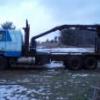
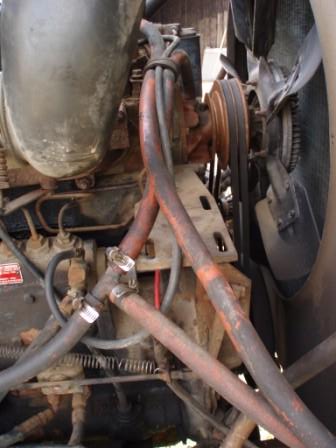
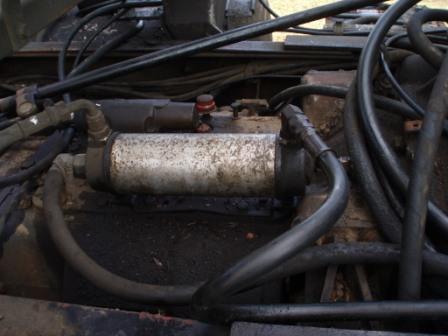
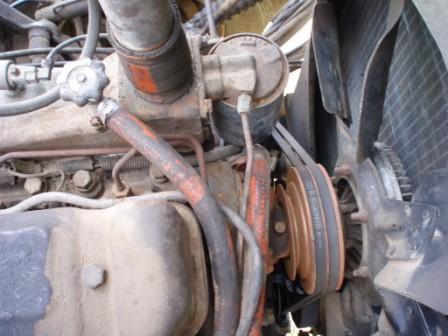
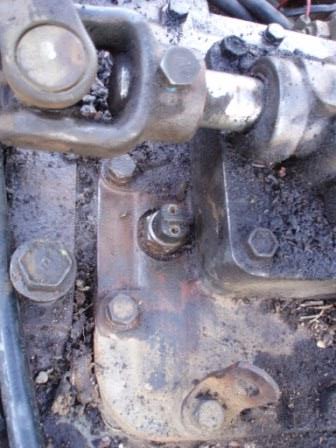
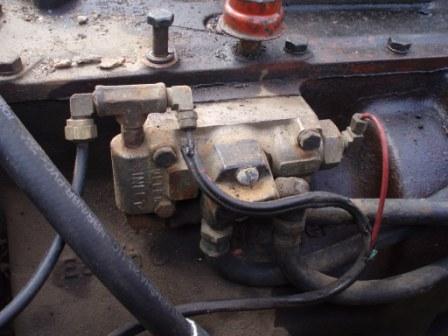
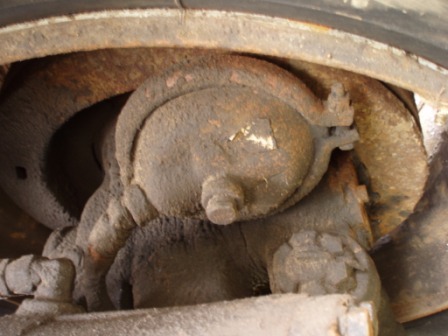

Backwards Hi/lo Axle Switch
in Engine and Transmission
Posted
I guess somebody hooked up the switch wrong (in is hi and out is low) when they replaced the original 15 speed with the current 9 speed on the truck. I know its not super important from a functional standpoint but it is counter-intuitive. Can I just switch the two lines at the selector on the gear shift or is it a more complex process?